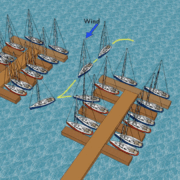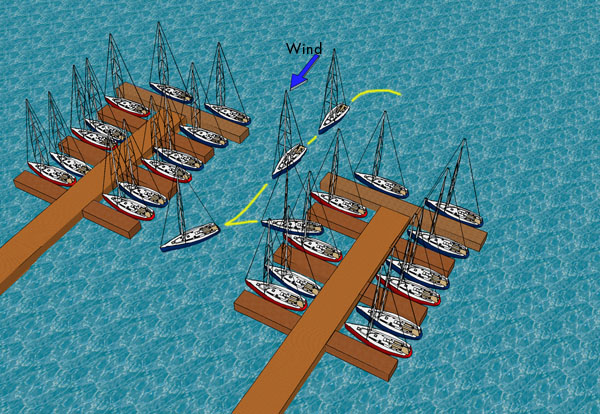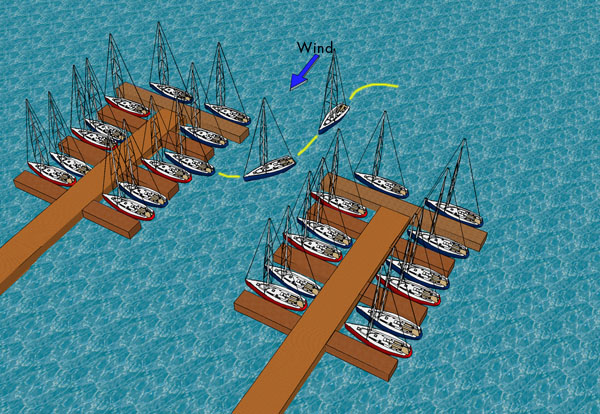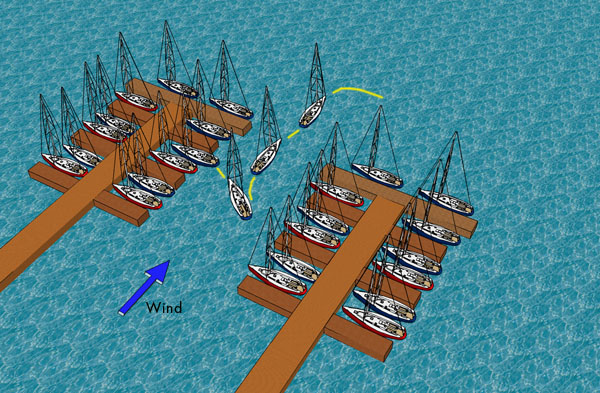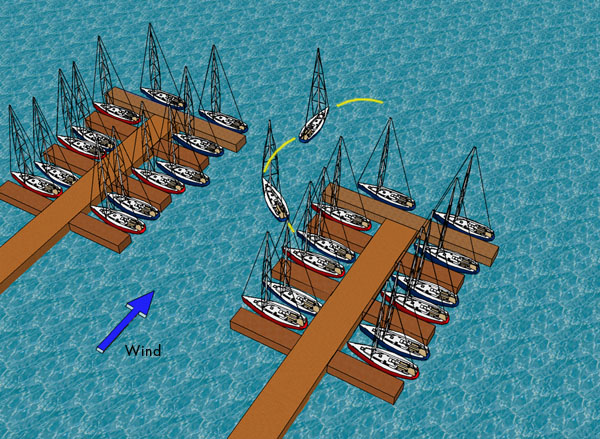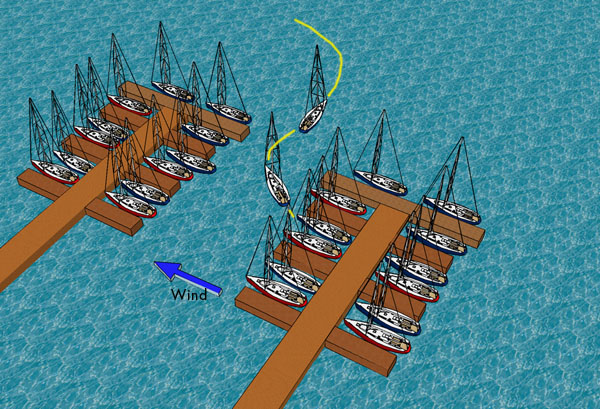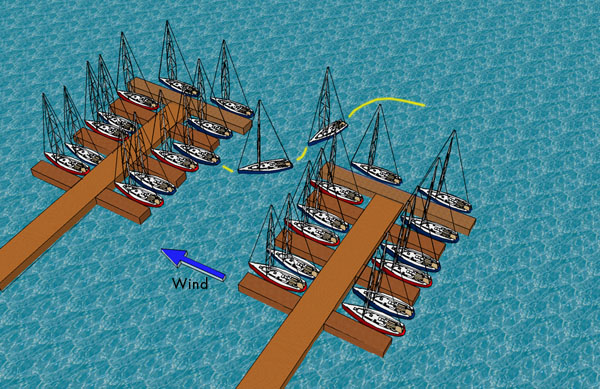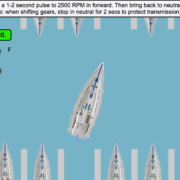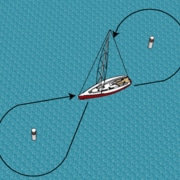Docking continued
In the previous blog we dealt with end ties. Now we get onto the more common configurations of boats in a slip.
SLIPS
(5) Wind coming into the slip channel. Your boat is stern to.
This is best handled by steering out of the slip and then immediately down wind. Back out of the slip channel and well into the main channel before engaging forward.
(6) Wind blowing into the slip channel. Your boat is bow to.
Simply back out of the slip into the slip channel and then into the main channel. You may need a bow line to the windward dock to prevent the bow blowing downwind as you engage reverse.
(7) Wind blowing out of the slip channel. Your boat is bow to.
Back out into the wind and then engage forward. Watch for traffic as you enter the main channel.
(8) Wind blowing out of the slip channel and your boat is stern to.
Simply drive the boat out to the main channel.
(9) Wind blows across the docks and your boat is stern to.
Again, simply drive the boat out to the main channel.
(10) Wind blows across the dock and your boat is bow to.
Simply reverse the boat out of the slip, into the slip channel and then into the main channel. If the wind is light you may elect to turn the boat in the slip channel and come out in forward. However if the wind is strong, it’s safer to follow the above diagram.
Other wind/current configurations are solved using variations of the above techniques.
Other Considerations
Most wheels have a center marker such as decorative knot or tape that indicates the centered position.
Post a lookout to make certain there are no other boats either in front or to your sides that may pose a potential collision condition. Courtesy and patience are always signs of a skilled and thoughtful helms person.
Controlling departure speed is important, you must have enough speed to steer, but no more than necessary in case you need to stop and/or maneuver in order to negotiate a turn.
Once in an open area of water you can proceed to start, unfurling sails. See NauticEd’s Module 7 in the Skipper Course or Register for the Maneuvering a Sailboat Under Power Course.


